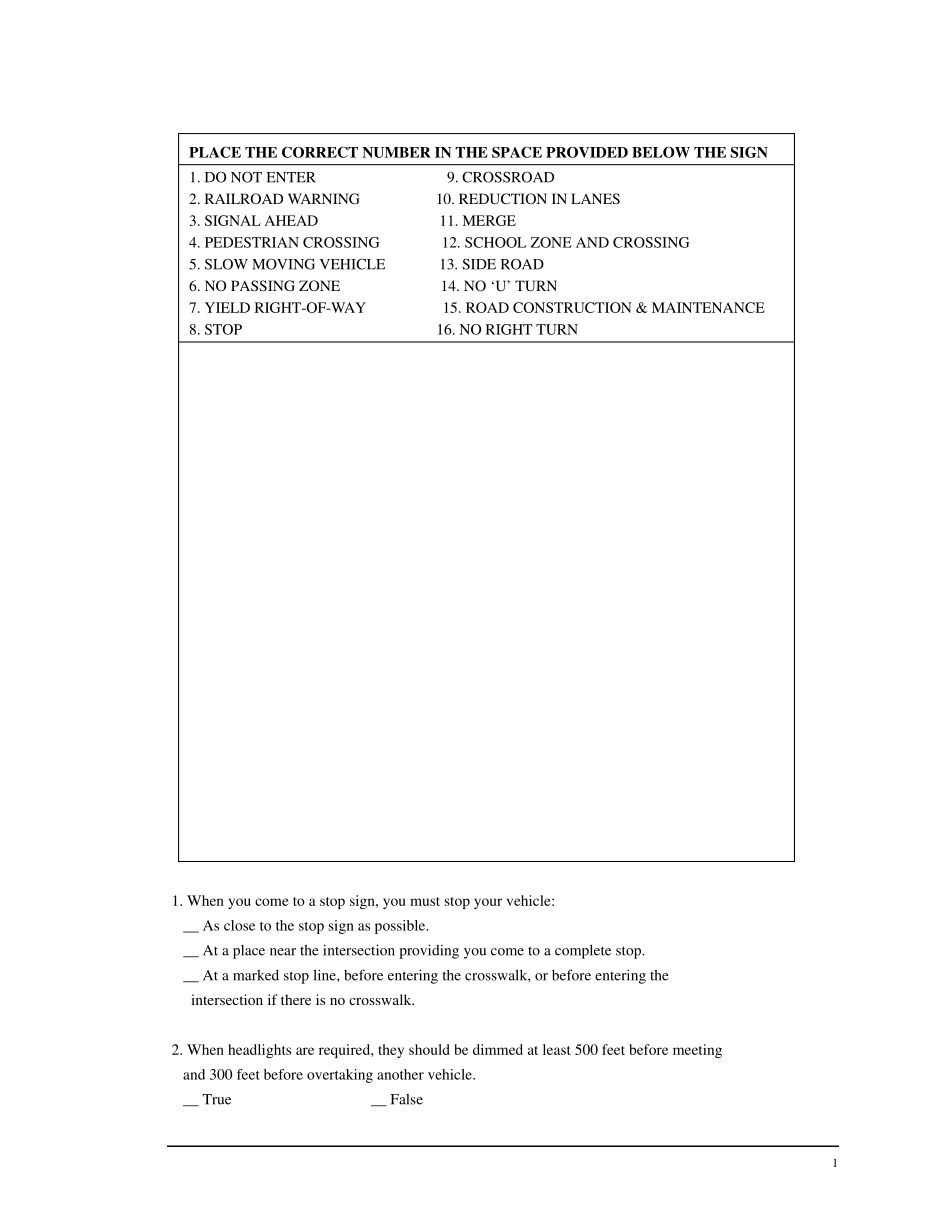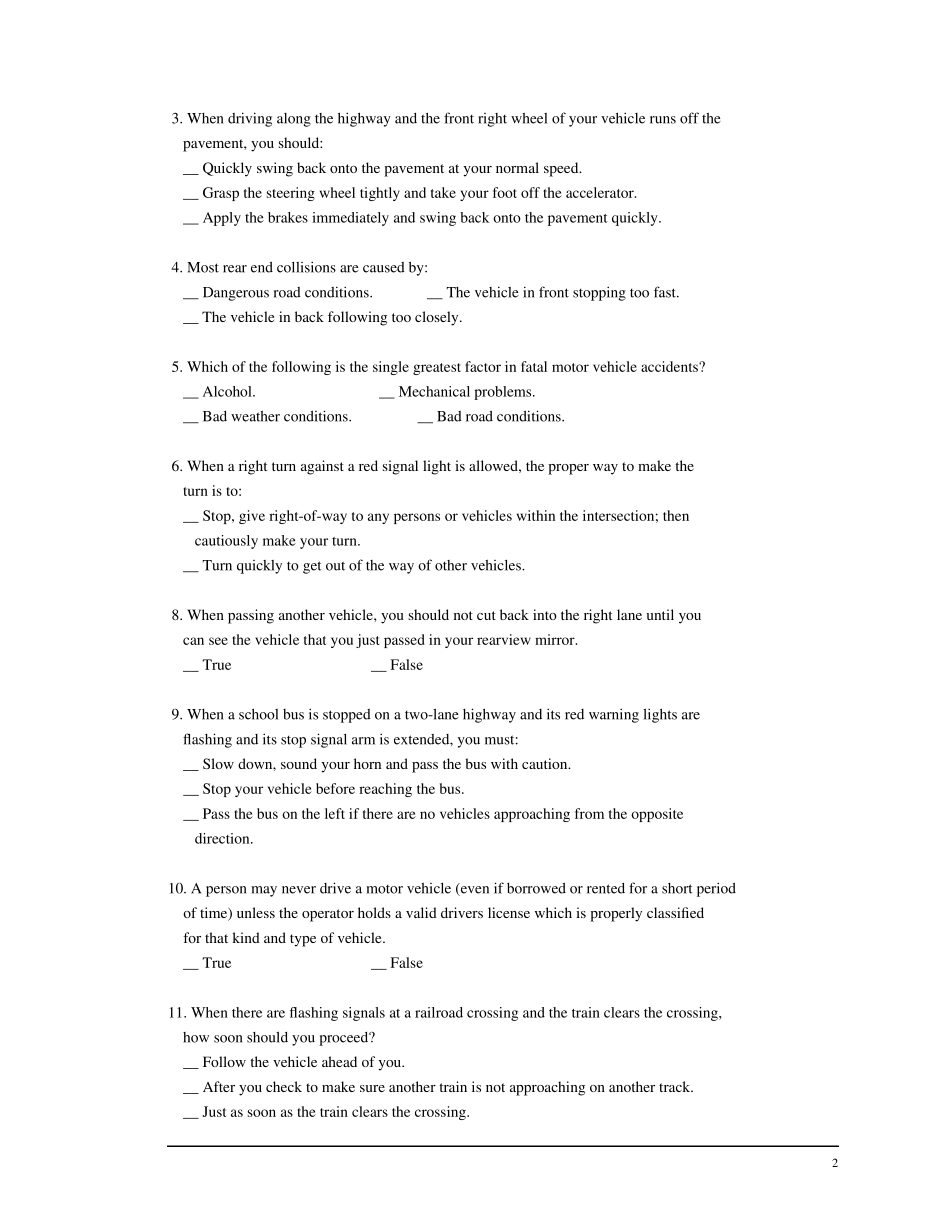1 1. When you come to a stop sign, you must stop your vehicle: __ As close to the stop sign as possible. __ At a place near the intersection providing you come to a complete stop. __ At a marked stop line, before entering the crosswalk, or before entering the intersection if there is no crosswalk. 2. When headlights are required, they should be dimmed at least 500 feet before meeting and 300 feet before overtaking another vehicle. __ True __ FalsePLACE THE CORRECT NUMBER IN THE SPACE PROVIDED BELOW THE SIGN1. DO NOT ENTER 9. CROSSROAD2. RAILROAD WARNING 10. REDUCTION IN LANES3. SIGNAL AHEAD 11. MERGE4. PEDESTRIAN CROSSING 12. SCHOOL ZONE AND CROSSING5. SLOW MOVING VEHICLE 13. SIDE ROAD6. NO PASSING ZONE 14. NO ‘U’ TURN7. YIELD RIGHT-OF-WAY 15. ROAD CONSTRUCTION & MAINTENANCE8. STOP 16. NO RIGHT TURN2 3. When driving along the highway and the front right wheel of your vehicle runs off the pavement, you should: __ Quickly swing back onto the pavement at your normal speed. __ Grasp the steering wheel tightly and take your foot off the accelerator. __ Apply the brakes immediately and swing back onto the pavement quickly. 4. Most rear end collisions are caused by: __ Dangerous road conditions. __ The vehicle in front stopping too fast. __ The vehicle in back following too closely. 5. Which of the following is the single greatest factor in fatal motor vehicle accidents? __ Alcohol. __ Mechanical problems. __ Bad weather conditions. __ Bad road conditions. 6. When a right turn against a red signal light is allowed, the proper way to make the turn is to: __ Stop, give right-of-way to any persons or vehicles within the intersection; then cautiously make your turn. __ Turn quickly to...


